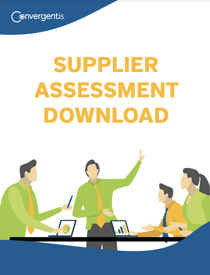Efficient delivery and order management play a critical role in the success of a business, especially in a market downturn . From e-commerce giants to local retailers, companies across various industries rely on streamlined logistics and well-managed orders to meet customer expectations, maximize operational efficiency, and drive profitability. In an era where fast shipping and seamless transactions are the norm, businesses that fail to prioritize and optimize their delivery and order management processes risk falling behind.
This blog explores the significance of efficient delivery and order management for businesses, highlighting the key challenges they face and the benefits of implementing effective strategies and technologies to keep track of their deliveries and orders. By understanding the importance of these core functions, businesses can maintain their competitive edge and deliver exceptional customer experiences.
Challenges Faced by Enterprises in Tracking Orders
Tracking orders accurately and efficiently is a complex task that presents several challenges for enterprises. Firstly, as businesses scale and their order volume increases, the sheer volume of orders can become overwhelming to manage manually. With a large number of orders flowing in and out, it becomes increasingly difficult to track each order's status, location, and estimated delivery times. This can lead to delays, errors, and a lack of visibility throughout the order fulfillment process.
Secondly, enterprises often face challenges when it comes to maintaining real-time visibility and transparency across their supply chain. The order journey involves multiple stakeholders, such as suppliers, manufacturers, distributors, and logistics partners. Coordinating and tracking orders as they move through various stages of the supply chain can be complex, particularly if different systems and technologies are used by each party. This lack of integration and interoperability can result in fragmented information, limited visibility, and difficulty in promptly addressing issues or bottlenecks that may arise during transit.
In order to overcome these challenges, enterprises need to adopt advanced order tracking systems and implement streamlined processes that enable seamless coordination among stakeholders.
Understanding the Delivery and Order Management Process
Understanding this end-to-end workflow is crucial for enterprises to identify potential bottlenecks, inefficiencies, and areas for improvement in their delivery and order management processes.
Overview of the delivery and order management workflow
The delivery and order management process involves a series of interconnected steps that span from receiving customer orders to the final delivery of products or services. It begins with order capture, where businesses receive customer requests through various channels such as online platforms, phone calls, or in-person interactions. Once the orders are captured, they need to be processed, which includes tasks like verifying product availability, checking customer information, and ensuring proper pricing and discounts are applied.
After order processing, businesses move on to order fulfillment, which involves picking, packing, and preparing the products for shipment. This stage also includes inventory management, where businesses ensure sufficient stock levels and track the movement of goods within their warehouses. Once the orders are prepared, they are handed over to the logistics team for transportation. This phase includes tasks such as route planning, carrier selection, and coordinating with transportation partners to ensure timely and efficient delivery. Finally, the orders are dispatched and delivered to the customers, with tracking and confirmation systems in place to provide visibility and updates on the delivery status.
Key Features to Look for in a Tracking and Delivery Solution for Your Business
Automation
One of the most important features to consider when choosing a tracking and delivery solution for your business is automation. By digitizing the logistics and delivery process, you can streamline operations and eliminate manual processes and potential errors. Look for a solution that allows you to bring the entire supply chain online, including all stakeholders involved. This feature will enhance efficiency and improve overall coordination within the interconnected ecosystem.
Data Analytics
An effective tracking and delivery solution should provide robust data analytics capabilities. With online tracking, every activity becomes a data point that can be analyzed to gain valuable insights. Look for a solution that offers comprehensive data analytics tools, allowing logistics managers to analyze the data in various ways. This will enable you to derive meaningful and actionable insights that can enhance decision-making processes and drive continuous improvement.
Improved Communication
Customers expect to be kept informed about the progress of their deliveries at all times. When evaluating tracking and delivery solutions, prioritize those that offer improved communication features. Look for features such as real-time updates, notifications via calls, app notifications, SMS, and email. These communication channels will enable you to constantly update customers about their package, meeting their expectations and fostering a positive customer experience.
Seeking Areas for Optimization
Effective order tracking and delivery play a pivotal role in guaranteeing key performance indicators (KPIs) for businesses. Timely and accurate delivery ensures that customer satisfaction KPIs, such as on-time delivery rates and order accuracy, are met, fostering positive customer experiences and loyalty. Efficient order tracking also helps businesses monitor and improve operational KPIs, such as order cycle time and fulfillment accuracy, by providing real-time visibility into the status of orders and identifying potential bottlenecks or areas for optimization.


